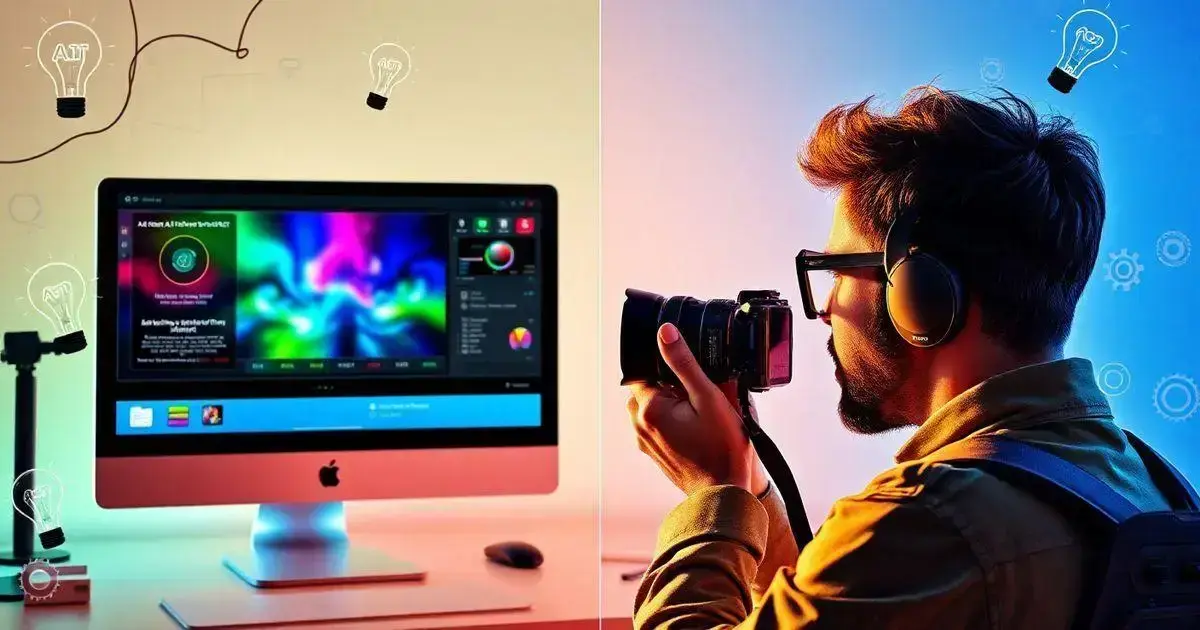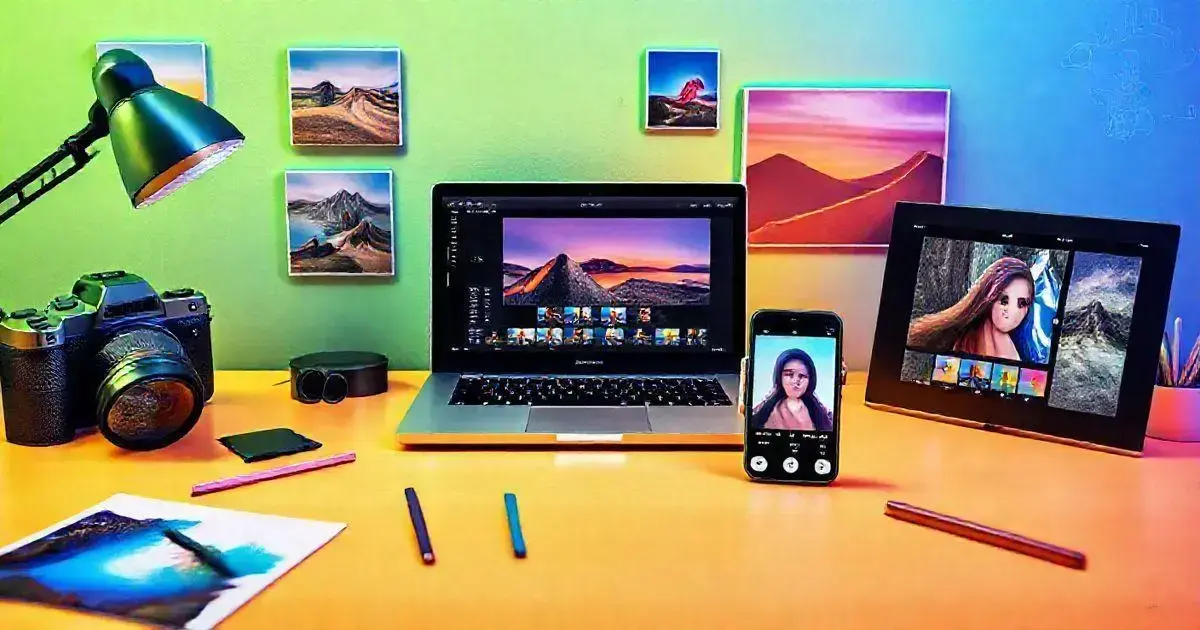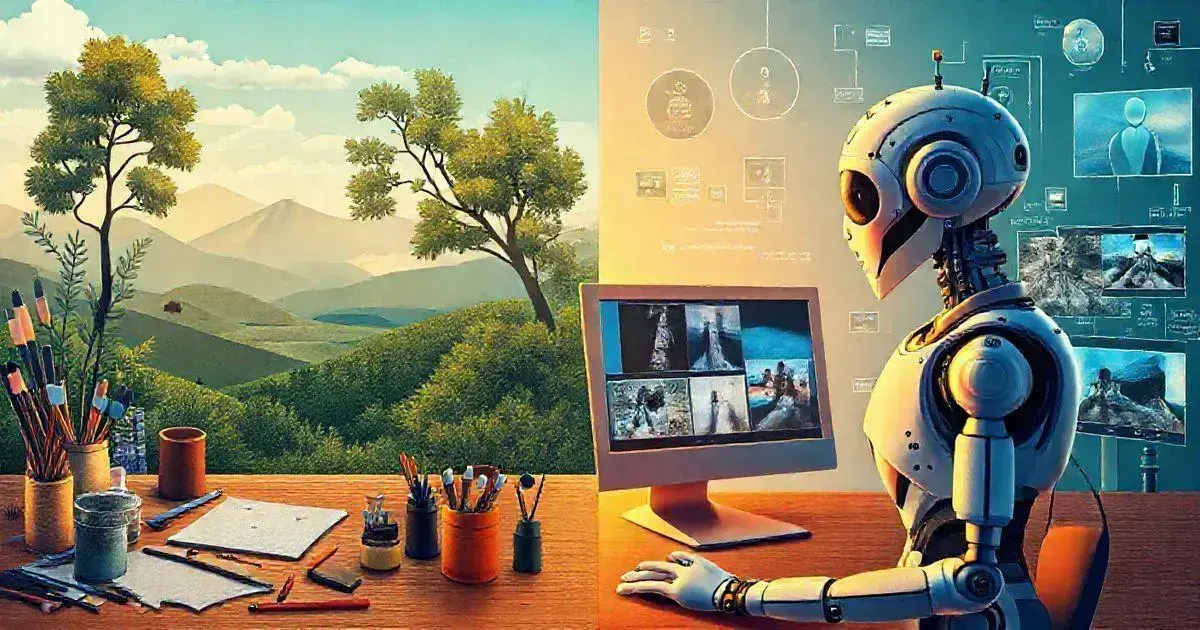Artificial intelligence for photography is revolutionizing how we take, edit, and organize photos. By automating repetitive tasks and enhancing image quality, AI helps photographers of all levels achieve stunning results effortlessly.
From adjusting lighting to organizing entire photo libraries, AI offers smart, time-saving solutions. These tools not only simplify workflows but also open new doors for creativity and expression.
Want to discover how artificial intelligence for photography can transform your skills? Keep reading to explore its game-changing possibilities.
What is Artificial Intelligence for Photography?
Artificial intelligence for photography refers to the use of advanced technologies to enhance the process of taking, editing, and managing photos. AI algorithms can analyze images, recognize patterns, and even make adjustments automatically. This technology enables photographers to achieve results that were once time-consuming or even impossible without extensive manual editing.
One primary application is in image enhancement, where AI can quickly improve aspects like lighting and color balance. For instance, software powered by AI can intelligently brighten a dark photo or adjust its colors to appear more natural.
Another significant use of AI in photography is in the realm of image organization. AI tools can sort through vast libraries of images and categorize them based on content, location, or the photographer’s preference. This feature saves photographers a lot of time and effort, allowing them to focus on their creative work.
Furthermore, AI tools can assist in creating stunning effects and simplifying complex editing processes. Photographers can use AI-driven applications to apply filters or to stylize images instantly, resulting in professional-quality edits with minimal effort.
Benefits of Using AI in Photography

Artificial intelligence for photography simplifies workflows by automating tasks like sorting and editing, saving valuable time for photographers. This efficiency lets them focus on creativity while ensuring consistent results.
AI also enhances image quality by offering precise adjustments to color, brightness, and clarity. These tools make it easier for anyone to achieve professional-looking photos with minimal effort, showcasing the power of artificial intelligence for photography.
Advanced features like object recognition and background editing further expand creative possibilities. With these innovations, photographers can elevate their work and unlock new levels of creativity.
How AI Enhances Image Editing
Artificial intelligence for photography significantly enhances image editing by streamlining complex tasks and improving the quality of photos. One key benefit is the ability of AI tools to perform automatic corrections that adjust brightness, contrast, and color balance without manual input.
This saves photographers valuable time, allowing them to focus on the creative aspects of their work. Furthermore, AI can analyze the content of an image and suggest edits tailored to that specific photo.
For example, it can identify objects and their arrangement, recommending the best ways to enhance the overall aesthetic. These intelligent suggestions often lead to results that are more visually appealing, showcasing the transformative power of artificial intelligence for photography.
Additionally, AI technologies can help remove unwanted elements from images, such as distractions or blemishes, in a way that looks natural. This feature is crucial for portrait photography, as it allows for cleaner and more polished final images.
Finally, with the growth of deep learning, AI editing tools can also learn from a photographer’s style. They can adapt and evolve over time, becoming even more effective at mimicking the photographer’s unique style, which further enhances the personalization of edits.
AI Tools for Photographers

There are many AI tools available for photographers that can boost their creativity and efficiency. One of the most popular categories is editing software. Artificial intelligence for photography tools automate tasks like skin retouching and color enhancement, making it easier to achieve great results quickly.
Some well-known AI editing tools include Adobe Photoshop and Lightroom. They offer features like content-aware fill, which intelligently removes unwanted objects from images, and Auto Color Correction, which adjusts color tones automatically.
Photographers can also benefit from AI-driven organization tools like Google Photos or Adobe Bridge. These tools leverage artificial intelligence for photography for tagging and categorizing images, making it easier to search for specific photos.
Additionally, there are AI applications like Skylum Luminar that provide special effects and enhancements through various filters that mimic professional editing styles. These tools make it simple for photographers to create stunning visuals without needing extensive editing skills.
Other emerging technologies include AI-powered smartphones equipped with advanced camera features. These devices can analyze scenes and automatically adjust settings for optimal results, providing a seamless shooting experience.
Future Trends in AI and Photography
The future of artificial intelligence in photography is bright and full of potential. As technology continues to evolve, we can expect artificial intelligence for photography tools to become more sophisticated, providing even greater assistance to photographers.
One notable trend is the increased integration of AI in camera technology, enabling real-time enhancements and adjustments based on scene analysis.
Another important trend is the rise of AI-powered editing software that uses machine learning algorithms to learn from user preferences. This will lead to more personalized editing experiences tailored to individual photographers’ styles.
We are also likely to see improvements in automated storytelling. With the help of artificial intelligence for photography, photographers can create detailed narratives by analyzing a series of photos and suggesting cohesive themes or sequences. This feature will enable photographers to present their work more effectively.
Furthermore, AI will likely enhance virtual reality (VR) and augmented reality (AR) experiences in photography. By using AI, photographers can create immersive experiences that allow viewers to engage with their work in revolutionary ways.
As these trends continue to develop, photographers will have more innovative tools at their disposal, allowing them to push the boundaries of creativity and redefine the art of photography.
Case Studies: AI in Action

There are numerous inspiring case studies where artificial intelligence for photography has made a significant impact. One standout case is how Netflix uses AI technologies to analyze viewer preferences and deliver tailored promotional images for its films. This results in visuals that resonate better with target audiences, enhancing engagement.
Another example can be seen in the work of Google Photos. This platform leverages AI for image recognition and smart organization. It automatically groups photos, making them easy to search by people, places, or events. Users appreciate this feature as it saves them time in managing vast photo libraries.
A notable photographer, Richard Koci Hernandez, utilizes AI tools for editing. His workflow benefits from AI-assisted applications that provide real-time feedback and enhance his creative process. By employing these tools, he can focus more on storytelling through his images.
These case studies illustrate how AI not only simplifies the process of photography but also opens new avenues for creativity and efficiency.
Getting Started with AI in Your Photography
Getting started with artificial intelligence for photography can be a rewarding journey. First, explore available AI tools that enhance both shooting and editing processes. Consider software like Adobe Lightroom or Skylum Luminar, which offer AI-driven features to improve your images effortlessly.
Next, familiarize yourself with the basics of AI. Understand how AI analyzes images and suggests adjustments based on learned patterns. This knowledge will help you make informed decisions while editing your photos.
Additionally, start implementing AI in small ways. Try using automatic tagging in your photo libraries to save time. As you become more comfortable, you can explore more advanced functionalities.
Finally, keep an eye on trends in AI technology. The field is evolving rapidly, and staying updated will help you harness new features as they emerge, keeping your photography fresh and innovative.
Ethical Considerations Surrounding AI in Photography

The rise of artificial intelligence for photography brings various ethical considerations that photographers should be aware of. One primary concern is authenticity. With AI tools capable of significant image manipulation, it becomes harder for viewers to discern what is real and what has been altered. This raises important questions about the integrity of visual storytelling.
Another ethical consideration is privacy. AI can analyze images for personal identification, which might infringe on individuals’ rights if used without consent. Photographers must be cautious, especially when handling sensitive subjects or environments.
Additionally, the use of AI in photography can lead to potential bias. If AI systems are trained on biased datasets, they may produce skewed results, affecting representation and inclusivity in the final images. Photographers should aim to use artificial intelligence for photography tools responsibly, ensuring diverse and fair representations in their work.
Furthermore, there’s the issue of accountability. When an AI tool generates an image, it raises the question of who is responsible for its content and potential repercussions. Photographers should remain mindful of their role in using these technologies.
Artificial Intelligence for Photography: Final Considerations
The integration of artificial intelligence for photography holds tremendous potential for enhancing creativity and efficiency. Photographers can simplify their workflows and elevate their artistry by utilizing AI-powered tools.
As we have explored, the benefits range from improved editing capabilities to smarter organization of image libraries. However, it is also important to approach these advancements with caution, considering the ethical implications that accompany AI technology.
To truly harness the power of AI, photographers should focus on continuous learning, staying updated with the latest tools and trends. By embracing these technologies while maintaining a mindful approach, photographers can ensure their work remains authentic and impactful.